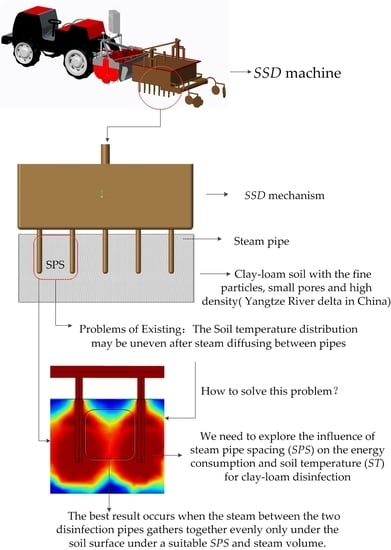Influence of the Spacing of Steam-Injecting Pipes on the Energy Consumption and Soil Temperature Field for Clay-Loam Disinfection
Abstract
:1. Introduction
2. Theoretical analysis
3. Soil Steam Disinfection Test
3.1. Test Conditions and Materials
3.2. Test Methods
3.3. Data Analysis
4. Results and Analysis
4.1. Analysis of the Change in Soil Temperature
4.2. Soil Temperature Distribution Analysis
4.3. Soil Water Content Distribution Analysis
4.4. Soil Temperature Distribution Analysis
5. Discussion
6. Conclusions
Author Contributions
Funding
Acknowledgments
Conflicts of Interest
Nomenclature
| ST | soil temperature (°C) |
| SSD | soil steam disinfection |
| SPS | steam pipe spacing (cm) |
| SLD | soil layer depth (cm) |
| qX | horizontal heat flux diffusion velocity (cm/s) |
| qY | vertical heat flux diffusion velocity (cm/s) |
| Xv | horizontal diffusion distance of the vapour (cm) |
| Yv | vertical diffusion distance of the vapour (cm) |
| Xh | horizontal heat transfer distance of the vapour (cm) |
| Yh | vertical heat transfer distance of the vapour (cm) |
| SWC | soil water content (%) |
| Qs | total amount of steam (kg) |
| Cv | coefficient of variation |
| Vt | soil temperature rise rate (°C/s) |
| Subscripts | |
| X | horizontal direction |
| Y | vertical direction |
| v | vapour |
| h | heat transfer |
| s | steam |
| t | temperature |
References
- Weiland, J.E.; Littke, W.R.; Browning, J.E.; Edmonds, R.L.; Davis, A.; Beck, B.R.; Miller, T.W. Efficacy of reduced rate fumigant alternatives and methyl bromide against soilborne pathogens and weeds in western forest nurseries. Crop Prot. 2016, 85, 57–64. [Google Scholar] [CrossRef] [Green Version]
- Yang, Y.T.; Hu, G.; Zhao, Q.L.; Guo, D.Q.; Gao, Q.S.; Guan, C.S. Research progress of soil physical disinfection equipment. Agric. Eng. 2015, 5, 43–48. (In Chinese) [Google Scholar]
- Cao, A.; Zheng, J.; Wang, Q.; Li, Y.; Yan, D. Advances in soil disinfection technology worldwide. China Veg. 2010, 21, 17–22. (In Chinese) [Google Scholar]
- Cao, A.; Zheng, J.; Guo, M.; Wang, Q.; Li, Y. Soil disinfection technology and key points. Vegetables 2011, 4, 41–44. [Google Scholar]
- Nishimura, A.; Asai, M.; Shibuya, T.; Kurokawa, S.; Nakamura, H. A steaming method for killing weed seeds produced in the current year under untilled conditions. Crop Prot. 2015, 71, 125–131. [Google Scholar] [CrossRef]
- Gay, P.; Piccarolo, P.; Aimonino, D.R.; Tortia, C. A high efficiency steam soil disinfestation system, Part I: Physical background and steam supply optimisation. Biosyst. Eng. 2010, 107, 74–85. [Google Scholar] [CrossRef]
- Peruzzi, A.; Raffaelli, M.; Ginanni, M.; Fontanelli, M.; Frasconi, C. An innovative self-propelled machine for soil disinfection using steam and chemicals in an exothermic reaction. Biosyst. Eng. 2011, 110, 434–442. [Google Scholar] [CrossRef]
- Khan, K.S.; Müller, T.; Dyckmans, J.; Joergensen, R.G. Development of ergosterol, microbial biomass c, n, and p after steaming as a result of sucrose addition, and sinapis alba cultivation. Biol. Fertil. Soils 2010, 46, 323–331. [Google Scholar] [CrossRef]
- Fennimore, S.A.; Miller, T.C.; Broome, J.C.; Dorn, N.; Greene, I. Evaluation of a mobile steam applicator for soil disinfestation in california strawberry. Hortscience 2014, 49, 1542–1549. [Google Scholar] [CrossRef]
- Roux-Michollet, D.; Dudal, Y.; Jocteur-Monrozier, L.; Czarnes, S. Steam treatment of surface soil: How does it affect water-soluble organic matter, c mineralization, and bacterial community composition. Biol. Fertil. Soils 2010, 46, 607–616. [Google Scholar] [CrossRef]
- Hoyos, E.P.; Gálvez, R.B. Influence of grafting and stem disinfection methods on the yield of greenhouse-grown spanish cucumbers. Acta Hortic. 2012, 927, 455–460. [Google Scholar] [CrossRef]
- Egli, M.; Mirabella, A.; Kägi, B.; Tomasone, R.; Colorio, G. Influence of steam sterilisation on soil chemical characteristics, trace metals and clay mineralogy. Geoderma 2006, 131, 123–142. [Google Scholar] [CrossRef]
- Gay, P.; Piccarolo, P.; Aimonino, D.R.; Tortia, C. A high efficiency steam soil disinfestation system, part II: Design and testing. Biosyst. Eng. 2010, 107, 194–201. [Google Scholar] [CrossRef]
- Van Loenen, M.C.A.; Turbett, Y.; Mullins, C.E.; Feilden, N.E.H.; Wilson, M.J.; Leifert, C.; Seel, W.E. Low temperature-short duration steaming of soil kills soil-borne pathogens, nematode pests and weed seeds. Eur. J. Plant Pathol. 2003, 109, 993–1002. [Google Scholar] [CrossRef]
- Jiang, X.S.; Yang, D.D.; Pan, S.P.; Chen, Q.; Li, P.P.; Zhou, H.P. Design and numerical simulation of steam transfer device for soil disinfector. J. Agric. Mech. Res. 2019, 5, 111–120. (In Chinese) [Google Scholar]
- Li, D.C.; Zhang, T.L. Fractal features of particle size distribution of soils in China. Soil Environ. Sci. 2000, 9, 263–265. (In Chinese) [Google Scholar]
- Ding, R.X.; Liu, Y.Z.; Sun, Y.H. Reference of soil system classification in subtropical humid region of China. Soils 1999, 2, 97–109. (In Chinese) [Google Scholar] [CrossRef]
- Minuto, G.; Gilardi, G.; Kejji, S.; Gullino, M.L.; Garibaldi, A. Effect of physical nature of soil and humidity on stream disinfestation. Acta Hortic. 2005, 698, 257–262. [Google Scholar] [CrossRef]
- Runia, W.T. A recent development in steam sterilization. Acta Hortic. 1983, 152, 195–200. [Google Scholar]
- Liu, Y.; Huang, G.; Lu, J.; Yang, X.; Zhuang, C. Simulation analysis and verification of heat transfer characteristics of truncated cone helix energy pile. Trans. CSAE 2018, 34, 227–234. [Google Scholar] [CrossRef]
- Luo, Z.; Du, J. Heat exchange scheme simulation optimization for ground source heat pump system with buried pipes by thermal equilibrium analysis. Trans. CSAE 2018, 34, 246–254. [Google Scholar] [CrossRef]
- Wang, X.; Zhang, H.; Zhang, L.; Sun, C. Infrared radiation drying characteristics and mathematical model for carrot slices. Trans. Chin. Soc. Agric. Mach. 2013, 44, 199–202. [Google Scholar] [CrossRef]
- Ju, H.; Xiao, H.; Bai, J.; Xie, L.; Lou, Z.; Gao, Z. Moderate and Short Wave Infrared Drying Characteristics and Color Changing of Apple Slices. Trans. Chin. Soc. Agric. Mach. 2013, 44, 187–191. [Google Scholar] [CrossRef]
- Zhang, X.; Liu, S.; Wu, Q.; Zeng, E.; Wang, G. Drying kinetics and parameters optimization of sludge drying at low temperature. Trans. CSAE 2017, 33, 217–223. [Google Scholar] [CrossRef]
- Diamante, L.M.; Patindol, R. Effects of temperature on drying rates and sensory qualities of sweetened maturing coconut meat (coco-crisps). Ann. Trop. Res. 2000, 22, 105–118. [Google Scholar]
- Topuz, A.; Gur, M.; Gul, M.Z. An experimental and numerical study of fluidized bed drying of hazelnuts. Appl. Therm. Eng. 2004, 24, 1535–1547. [Google Scholar] [CrossRef]
- Philip, J.R.; De Vries, D.A. Moisture movement in porous materials under temperature gradients. Eos Trans. Am. Geophys. Union 1957, 38, 222–232. [Google Scholar] [CrossRef]
- Bergins, C.; Crone, S.; Strauss, K. Multiphase flow in porous media with phase change. Part II: Analytical solutions and experimental verification for constant pressure steam injection. Transp. Porous Media 2005, 60, 275–300. [Google Scholar] [CrossRef]
- Bear, J.; Bachmat, Y. Introduction to Modeling of Transport Phenomena in Porous Media, 1st ed.; Springer: Dordrecht, The Netherlands, 1990; ISBN 978-0-7923-1106-5. [Google Scholar]
- Minkowycz, W.J.; Haji-Sheikh, A.; Vafai, K. On departure from local thermal equilibrium in porous media due to a rapidly changing heat source: The Sparrow number. Int. J. Heat Mass Transf. 1999, 42, 3373–3385. [Google Scholar] [CrossRef]
- Amiri, A.; Vafai, K. Transient analysis of incompressible flow through a packed bed. Int. J. Heat Mass Transf. 1998, 41, 4259–4279. [Google Scholar] [CrossRef]
- Li, X.; Zhu, L.; Wang, L.; Wang, J. Optimization of thermally enhanced SVE process for remediation of hydrocarbon contaminated soil by response surface methodology. Chin. J. Environ. Eng. 2018, 12, 914–922. [Google Scholar] [CrossRef]
- Weishaupt, K.; Bordenave, A.; Atteia, O.; Class, H. Numerical investigation on the benefits of preheating for an increased thermal radius of influence during steam injection in saturated soil. Transp. Porous Media 2016, 114, 601–621. [Google Scholar] [CrossRef]


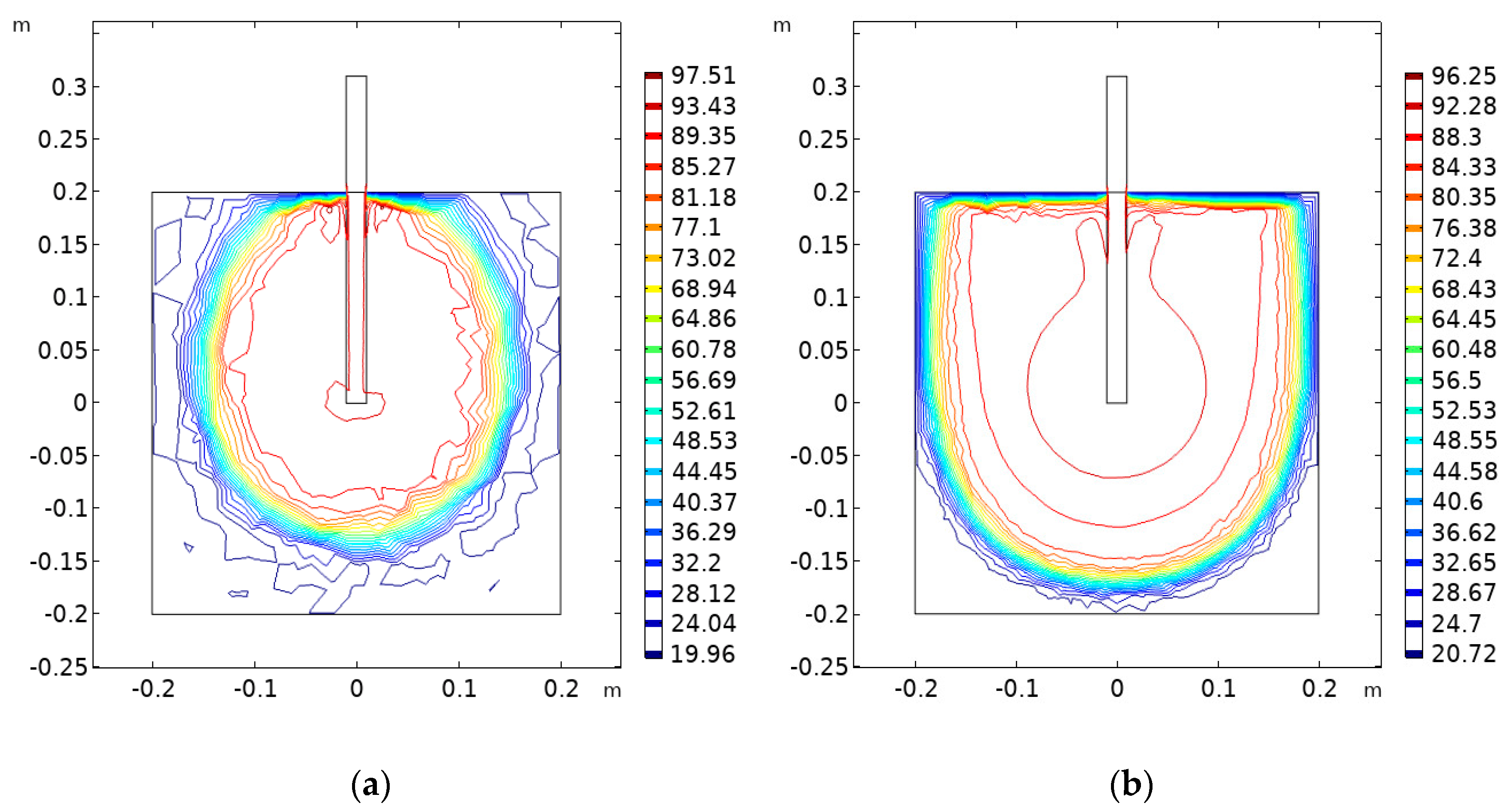
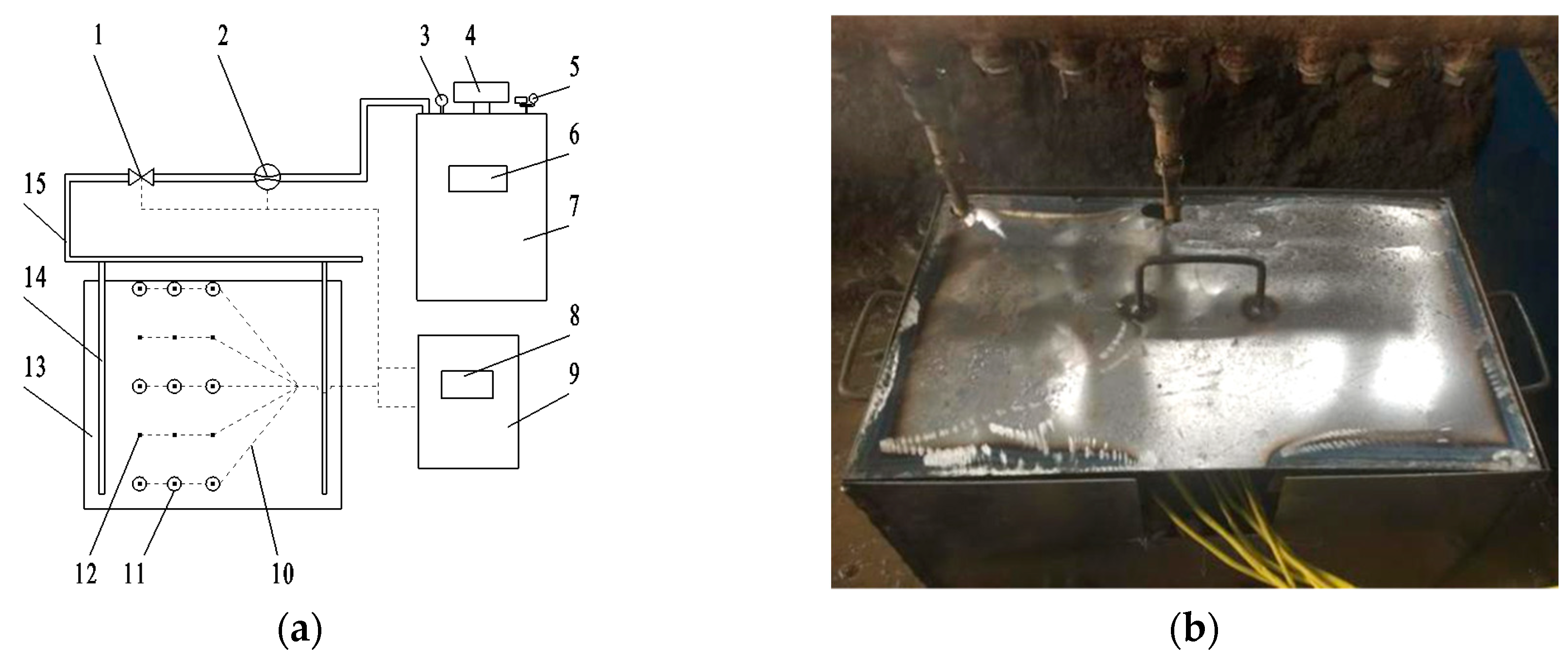
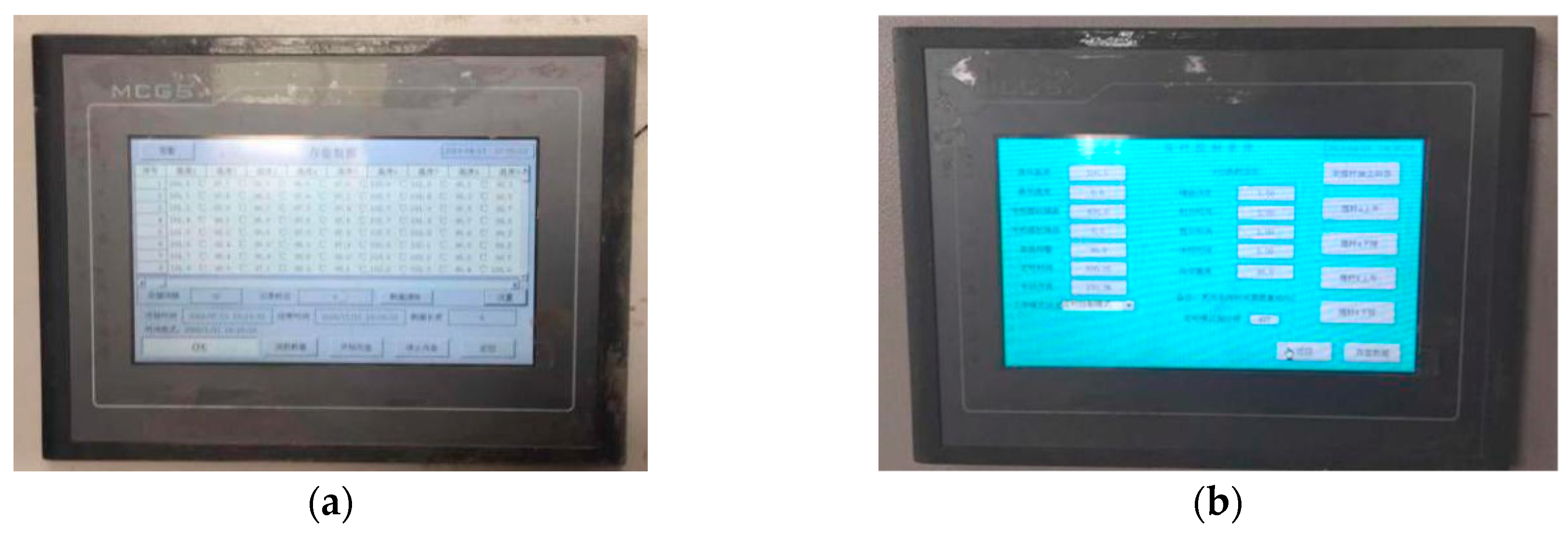

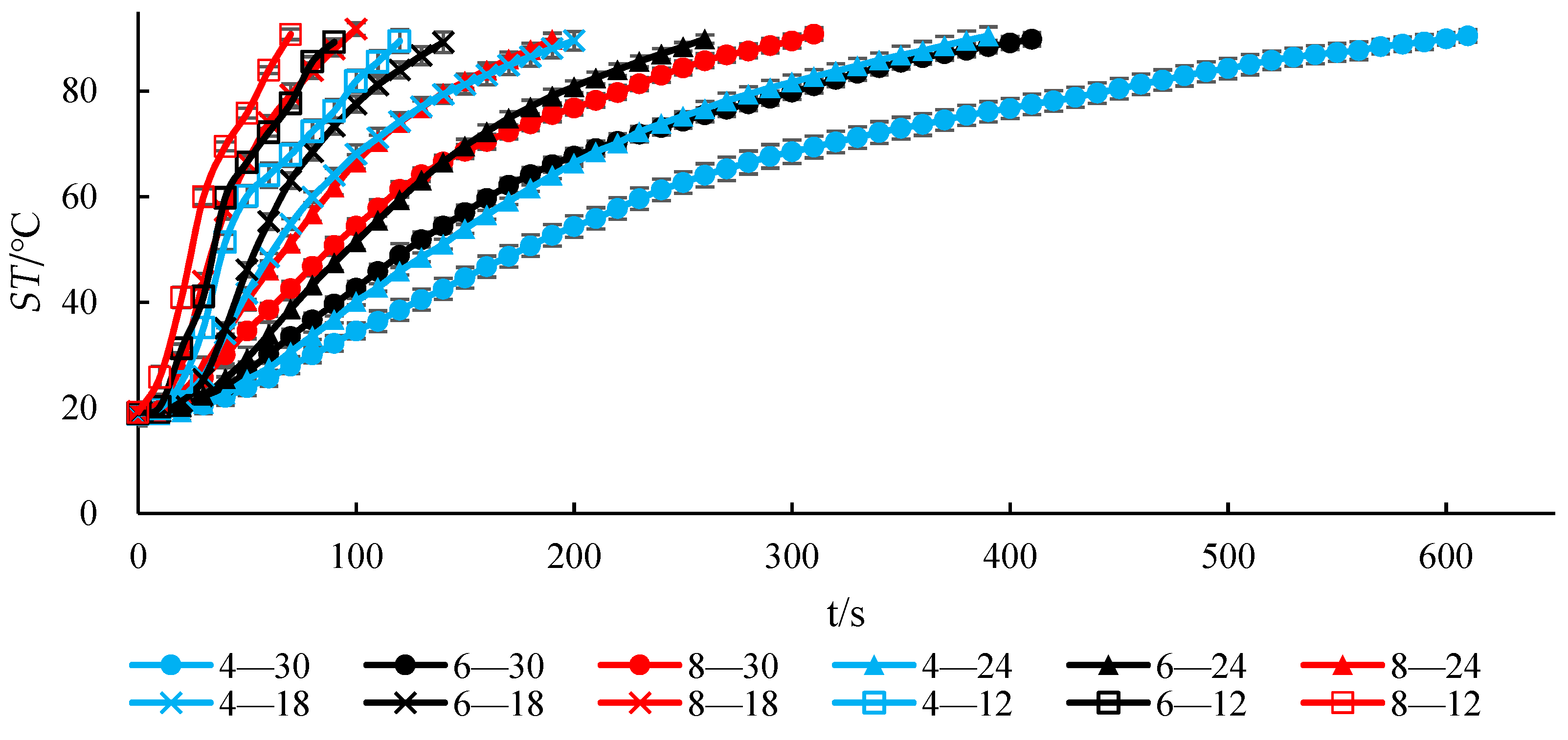

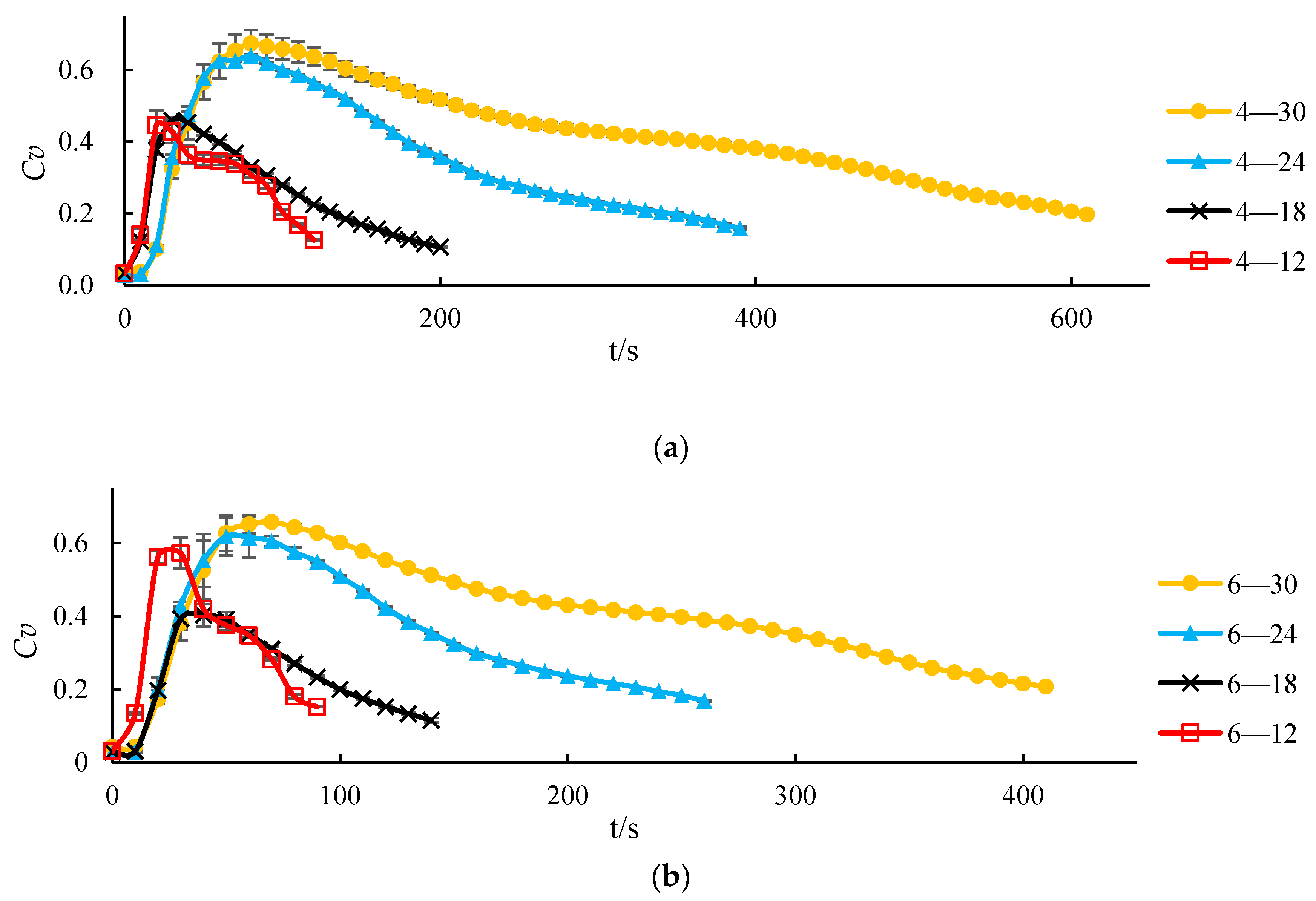



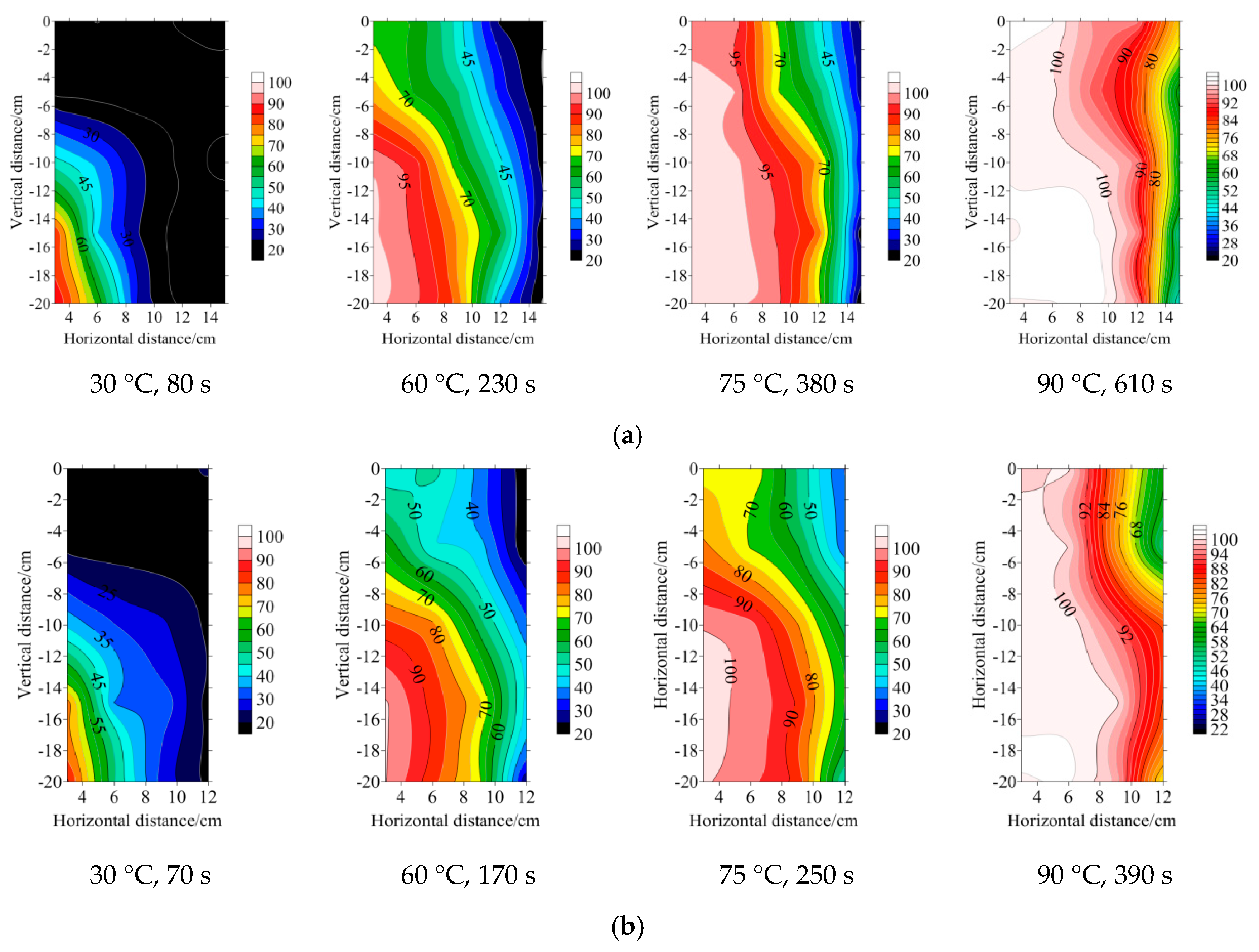


| Steam Temperature/°C | Steam Flow Rate/(kg/h) | Steam Enthalpy/(kJ/kg) | Heat of Evaporation/(kJ/kg) | Disinfection Time/min |
|---|---|---|---|---|
| 120 | 2 | 2708.9 | 2332.09 | 56.3 |
| 120 | 3 | 2708.9 | 2332.09 | 37.6 |
| 120 | 4 | 2708.9 | 2332.09 | 28.2 |
| 140 | 2 | 2737.8 | 2360.99 | 55.6 |
| 140 | 3 | 2737.8 | 2360.99 | 37.1 |
| 140 | 4 | 2737.8 | 2360.99 | 27.8 |
| 160 | 2 | 2762.9 | 2386.09 | 55.1 |
| 160 | 3 | 2762.9 | 2386.09 | 36.7 |
| 160 | 4 | 2762.9 | 2386.09 | 27.5 |
| Soil Types | Field Capacity/% | Bulk Density/ (g/cm3) | Soil Particle Compositions/% | ||
|---|---|---|---|---|---|
| Clay (<0.002 mm) | Silt (≥0.002–0.02 mm) | Sand (≥ 0.02–2 mm) | |||
| Clay-loam | 32.3 | 1.15 | 53.3% | 23.3% | 23.3% |
| Test Components | Manufacturer |
|---|---|
| LSS0.1-0.7-Y boiler | Jiangsu Yueheng Special Equipment Manufacturing Co., Ltd. |
| LYK-10 boiler pressure controller | Changzhou Liping Electronic Equipment Co., Ltd. |
| Y60 pressure gauge | Hongsheng Instrument Factory Co., Ltd. |
| Q911F flow valve | Nanjing Meiyue Valve Co., Ltd. |
| LUGB-20 flow meter | Nanjing Lantewan Electronic Technology Co., Ltd. |
| ST-SWC control box | / |
| two steam disinfection pipes | / |
| soil bin (30 cm × 30 cm × 30 cm) | / |
| DE-WEINI steam conveying pipe | Shanghai Jiyou Pipe Co., Ltd. |
| SPS (cm) | Flow Rate (kg/h) | Time Ratio | Relative Energy Consumption kJ/(kg·°C) |
|---|---|---|---|
| 12 | 4 | 0.637 ± 0.05d | 2.68 ± 0.20b |
| 6 | 0.565 ± 0.03e | 3.02 ± 0.18a | |
| 8 | 0.548 ± 0.05e | 3.13 ± 0.32a | |
| 18 | 4 | 0.857 ± 0.04ab | 1.99 ± 0.09cd |
| 6 | 0.798 ± 0.02bc | 2.13 ± 0.06cd | |
| 8 | 0.905 ± 0.06a | 1.89 ± 0.14d | |
| 24 | 4 | 0.781 ± 0.02bc | 2.18 ± 0.05cd |
| 6 | 0.774 ± 0.01c | 2.20 ± 0.03cd | |
| 8 | 0.794 ± 0.03bc | 2.15 ± 0.09cd | |
| 30 | 4 | 0.767 ± 0.01c | 2.22 ± 0.03c |
| 6 | 0.769 ± 0.02c | 2.21 ± 0.04c | |
| 8 | 0.772 ± 0.01c | 2.20 ± 0.03cd |
© 2019 by the authors. Licensee MDPI, Basel, Switzerland. This article is an open access article distributed under the terms and conditions of the Creative Commons Attribution (CC BY) license (http://creativecommons.org/licenses/by/4.0/).
Share and Cite
Yang, Z.; Wang, X.; Ameen, M. Influence of the Spacing of Steam-Injecting Pipes on the Energy Consumption and Soil Temperature Field for Clay-Loam Disinfection. Energies 2019, 12, 3209. https://doi.org/10.3390/en12173209
Yang Z, Wang X, Ameen M. Influence of the Spacing of Steam-Injecting Pipes on the Energy Consumption and Soil Temperature Field for Clay-Loam Disinfection. Energies. 2019; 12(17):3209. https://doi.org/10.3390/en12173209
Chicago/Turabian StyleYang, Zhenjie, Xiaochan Wang, and Muhammad Ameen. 2019. "Influence of the Spacing of Steam-Injecting Pipes on the Energy Consumption and Soil Temperature Field for Clay-Loam Disinfection" Energies 12, no. 17: 3209. https://doi.org/10.3390/en12173209



